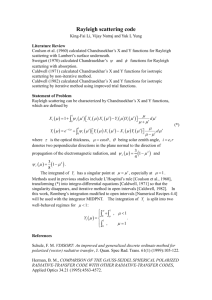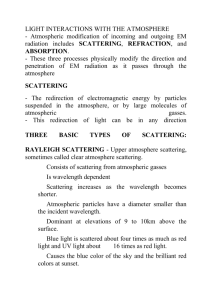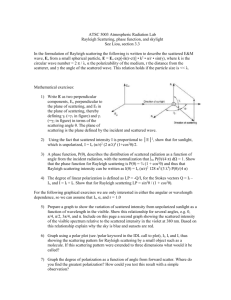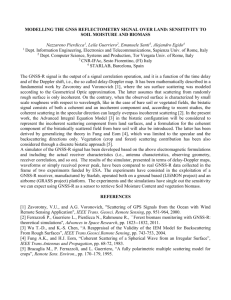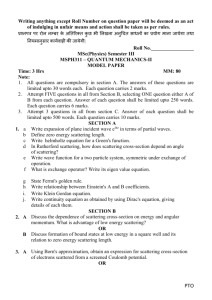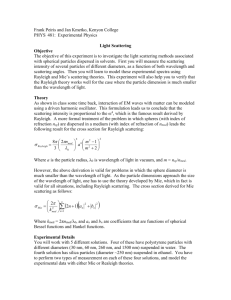Assignment 1
advertisement
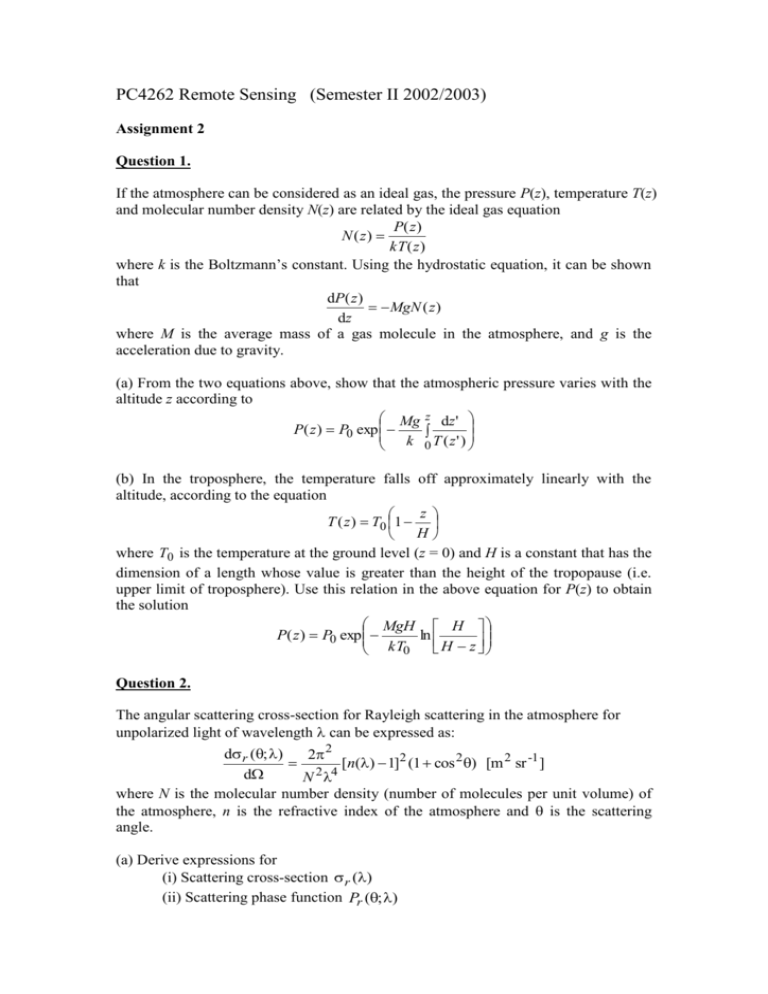
PC4262 Remote Sensing (Semester II 2002/2003) Assignment 2 Question 1. If the atmosphere can be considered as an ideal gas, the pressure P(z), temperature T(z) and molecular number density N(z) are related by the ideal gas equation P( z ) N ( z) kT ( z ) where k is the Boltzmann’s constant. Using the hydrostatic equation, it can be shown that dP ( z ) MgN ( z ) dz where M is the average mass of a gas molecule in the atmosphere, and g is the acceleration due to gravity. (a) From the two equations above, show that the atmospheric pressure varies with the altitude z according to Mg z dz ' P( z ) P0 exp k T ( z ' ) 0 (b) In the troposphere, the temperature falls off approximately linearly with the altitude, according to the equation z T ( z ) T0 1 H where T0 is the temperature at the ground level (z = 0) and H is a constant that has the dimension of a length whose value is greater than the height of the tropopause (i.e. upper limit of troposphere). Use this relation in the above equation for P(z) to obtain the solution MgH H P( z ) P0 exp ln kT0 H z Question 2. The angular scattering cross-section for Rayleigh scattering in the atmosphere for unpolarized light of wavelength can be expressed as: d r (; ) 2 [n() 1]2 (1 cos 2 ) [m 2 sr -1 ] 2 4 d N where N is the molecular number density (number of molecules per unit volume) of the atmosphere, n is the refractive index of the atmosphere and is the scattering angle. (a) Derive expressions for (i) Scattering cross-section r () (ii) Scattering phase function Pr (; ) (iii) Angular scattering coefficient (iv) Scattering coefficient r () d r (; ) d (b) The refractive index of air varies with the wavelength and number density according to the relation n() 1 b1 N (1 b2 2 b34 ) where b1 , b2 , b3 are constants. Use this relation together with the results of the previous problem to derive an expression for the optical thickness of atmosphere due to Rayleigh scattering at altitude z, r ( ; z ) r ( ; z ' ) d z ' z Show that the expression for the Rayleigh scattering optical thickness can be reduced to the form: P( z ) a1 a2 a3 1 r (; z ) 4 4 P0 where 32 2 b12 a1 3 P0 , a2 2b2 , a3 2b3 b2 2 Mg When the wavelength is in micrometers, the values of these coefficients are a1 0.008569, a2 0.0113, a3 0.00013 . Generate a graph of the Rayleigh scattering optical thickness r () at sea level (z=0) as a function of the wavelength . Question 3. Refer to the satellite sensor described in Question 3 of Problem set 1. (a) Calculate the radiance and flux collected by channel 2 of the sensor, assuming that the ground is dark and only molecular scattering (Rayleigh scattering) as described in Question 2 above is significant. (b) Repeat (a), but now the ground reflectance is .



